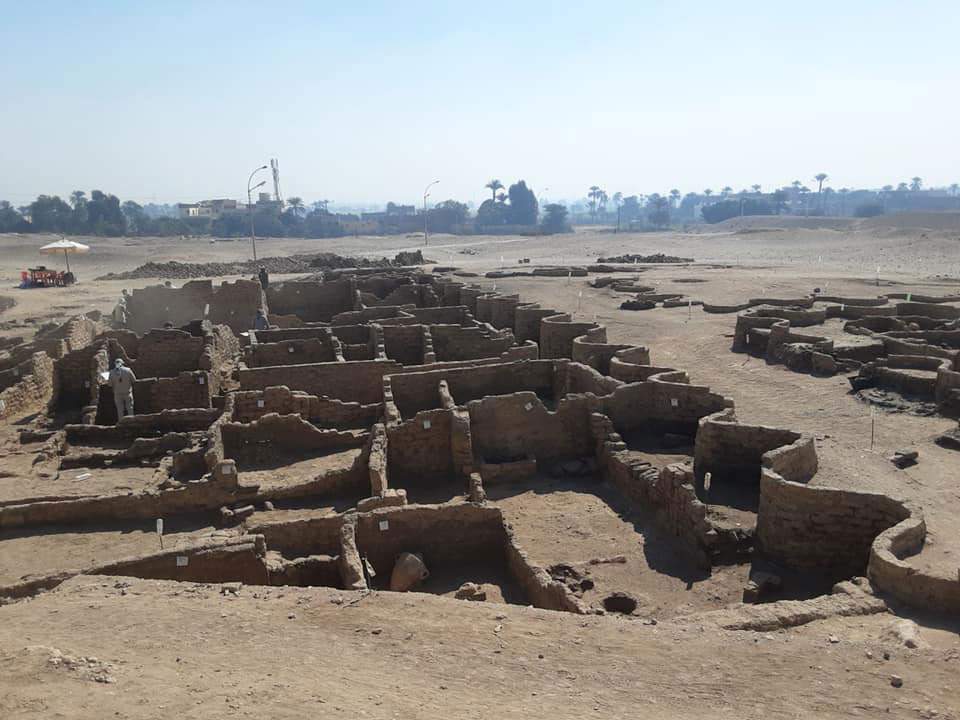Zahi Hawass, former Egyptian Minister of Antiquities, announced in a note the discovery of the ancient city of Aten near Luxor. Hawass, who headed the archaeological mission, found the 3,000-year-old city lost beneath the sands: it dates back to the reign of Amenhotep III.
“Many foreign missions have searched for this city and never found it. We started our work looking for the funerary temple of Tutankhamun because the temples of Horemheb and Ay were found in this area,” Hawass commented. This is the largest city ever found in Egypt. According to Betsy Brian, professor of Egyptology at John Hopkins University in Baltimore, "the discovery of this lost city is the second most important archaeological discovery since Tutankhamun’s tomb." Founded by one of the greatest rulers, King Amenhotep III, the ninth king of the 18th dynasty who ruled Egypt from 1391 to 1353 B.C., Aten was active during the co-rulership of the great king and his son, the Amenhotep IV / Akhenaten.
It was the largest administrative and industrial settlement of the Egyptian Empire era on the west bank of Luxor.
“The streets of the city are lined with houses, whose walls are up to 3 meters high,” Hawass recounts.
“The discovery of the Lost City will not only give a glimpse into the lives of the ancient Egyptians at the time when the empire was at its peak, but will help us shed light on one of history’s greatest mysteries: namely why Akhenaten and Nefertiti decided to move to Amarna,” Brian added.
The excavation area is located between the temple of Ramses III at Medinet Habu and the temple of Amenhotep III at Memnon: intended to search for Tutankhamun’s funerary temple. Tutankhamun’s successor, King Ay, built his temple on a site that was later adjacent to the southern side of Ramses III’s temple at Medinet Habu.
Egyptologists believe that the temple of Ay may have once belonged to Tutankhamun because two colossal statues of the young king were found here. The northern part of the temple is still buried under the sand.
The excavation began last September, and within weeks, much to their surprise, formations of mud bricks began to appear. What they unearthed was the site of a large city in good condition, with walls almost complete and rooms filled with objects of daily life. The archaeological layers had remained intact for thousands of years.
First objective of the mission was to date this site. Hieroglyphic inscriptions were found on clay caps of wine jars. Historical references document that the settlement consisted of three royal palaces of King Amenhotep III, the administrative and industrial center of the empire.
A large amount of archaeological finds, such as rings, scarabs, colored pottery vessels and mud bricks with King Amenhotep III’s cartouche seals, confirmed the dating of the city.
In the southern part, a bakery was discovered, an area where food was prepared and cooked, including ovens and a pottery storehouse. From its size, the kitchen housed a large number of workers and employees.
The second area is the administrative and residential quarters, with larger, well-arranged units: it is enclosed by a zig-zag wall, with a single access point leading to interior corridors and residential areas. The single entrance suggests that there was a possibility of controlling entry and exit into enclosed areas.
The zig-zag walls are one of the rare architectural elements of ancient Egyptian architecture, used mainly towards the end of the 18th dynasty. The third area constitutes the workshop: on the one hand, the production area of mud bricks used for the construction of temples and outbuildings (the bricks have seals with the cartouche of King Amenhotep III); on the other, a large number of casting molds for the production of amulets and decorative elements.
In all areas, tools used in industrial activities such as spinning and weaving, and metal and glass processing slags were also found.
A large cemetery was discovered north of the settlement, and rock-cut tombs of different sizes were found. Excavations are still ongoing, and intact tombs full of treasures are expected to be discovered.
The discovery of the lost city will gain more insight into the daily life of the ancient Egyptians regarding how houses were built and decorated, the tools they used and how work was organized. Only one-third of the area has been discovered so far, and the mission will continue excavations, including the area identified as the potential site of Tutankhamun’s burial temple.
 |
| Egypt, lost city of Aten discovered. It is the most important discovery since the tomb of Tutankhamun |
Warning: the translation into English of the original Italian article was created using automatic tools. We undertake to review all articles, but we do not guarantee the total absence of inaccuracies in the translation due to the program. You can find the original by clicking on the ITA button. If you find any mistake,please contact us.